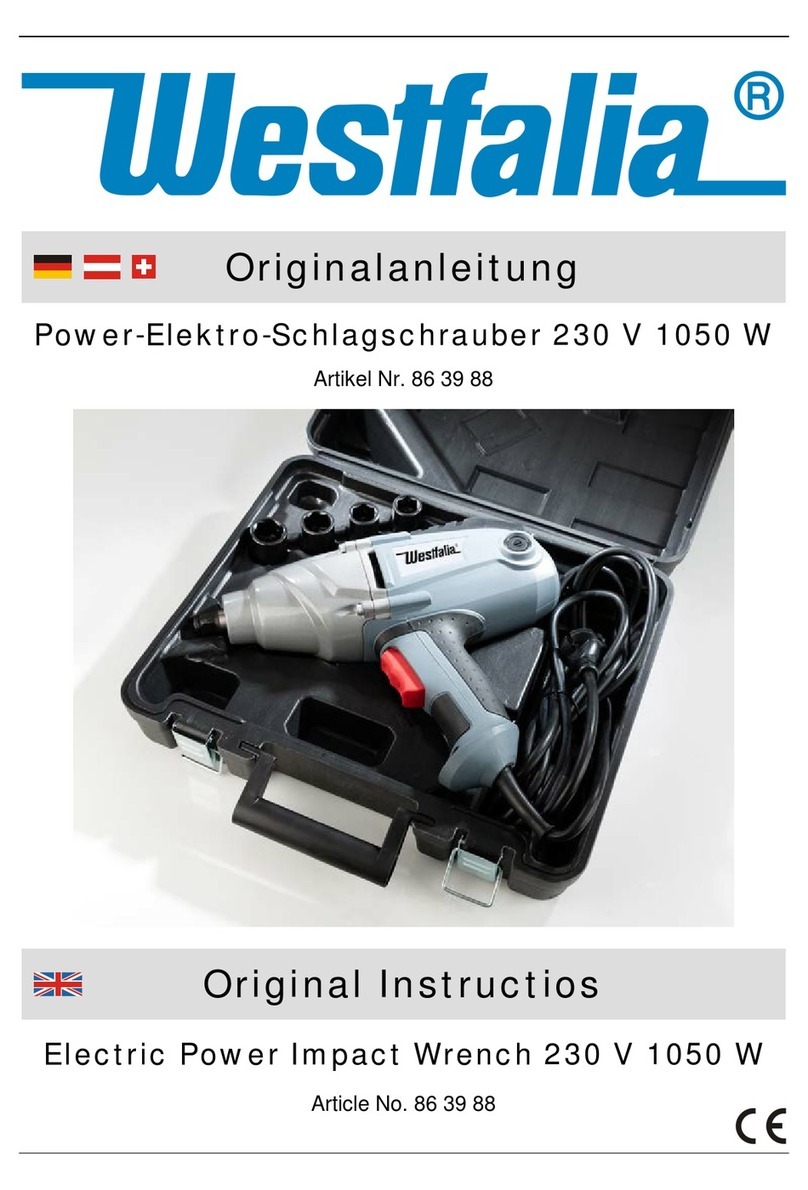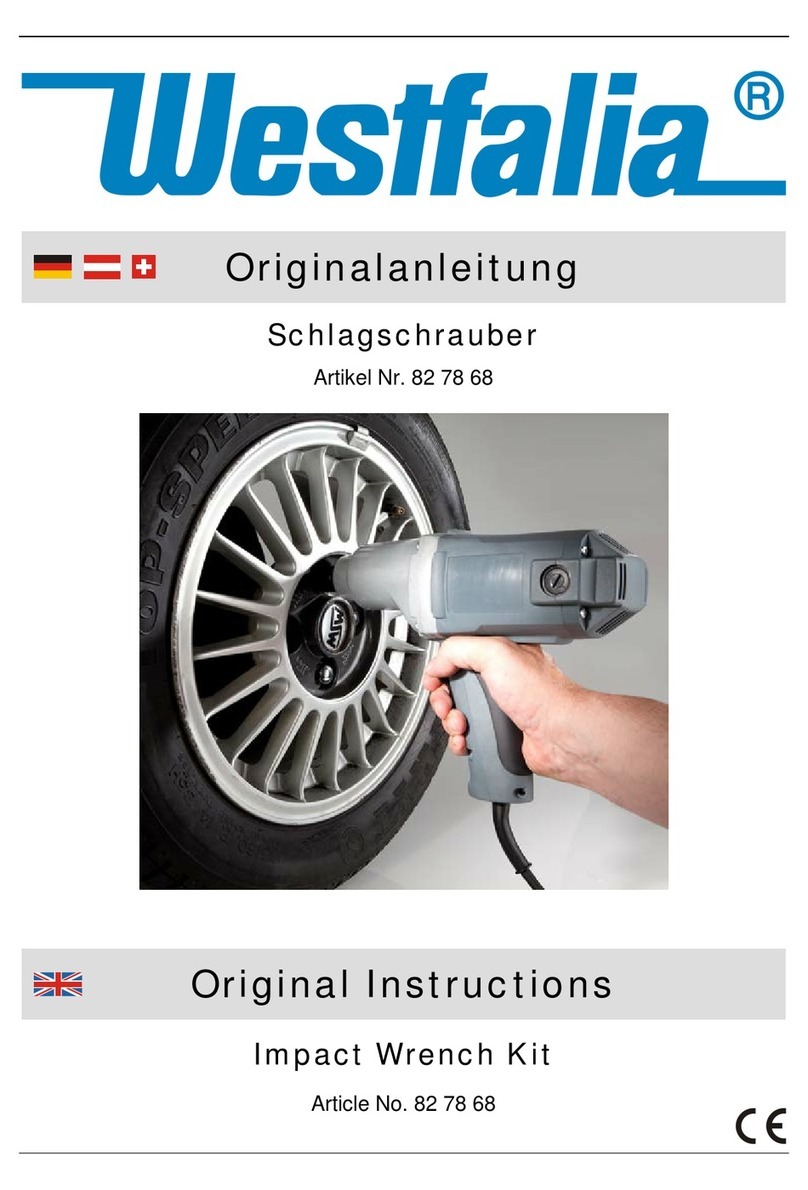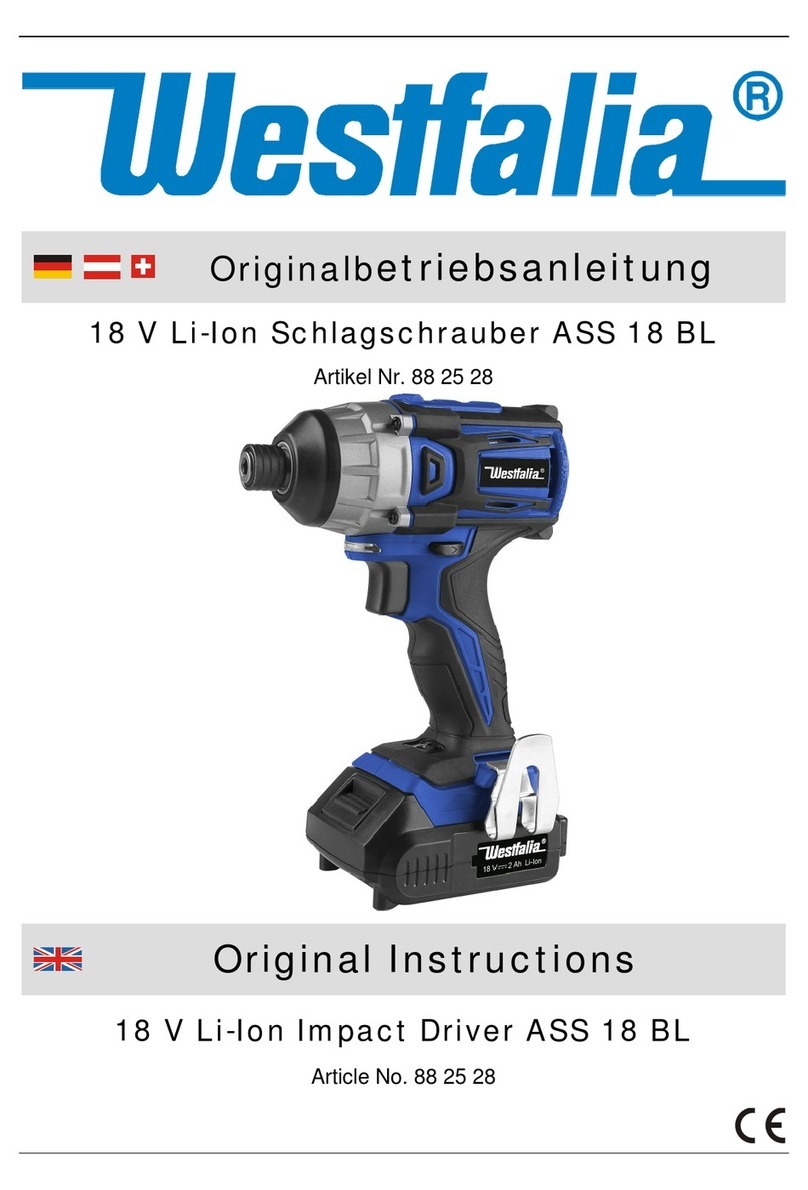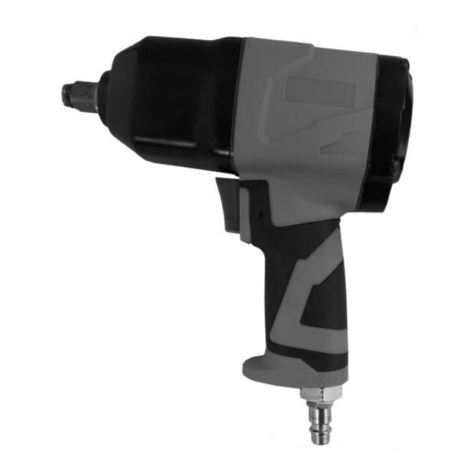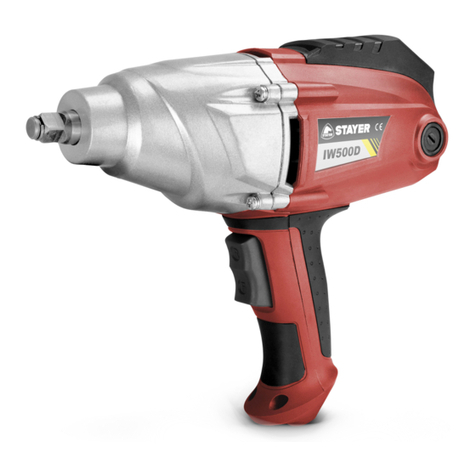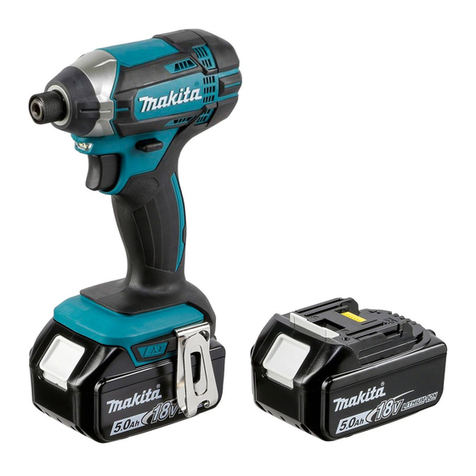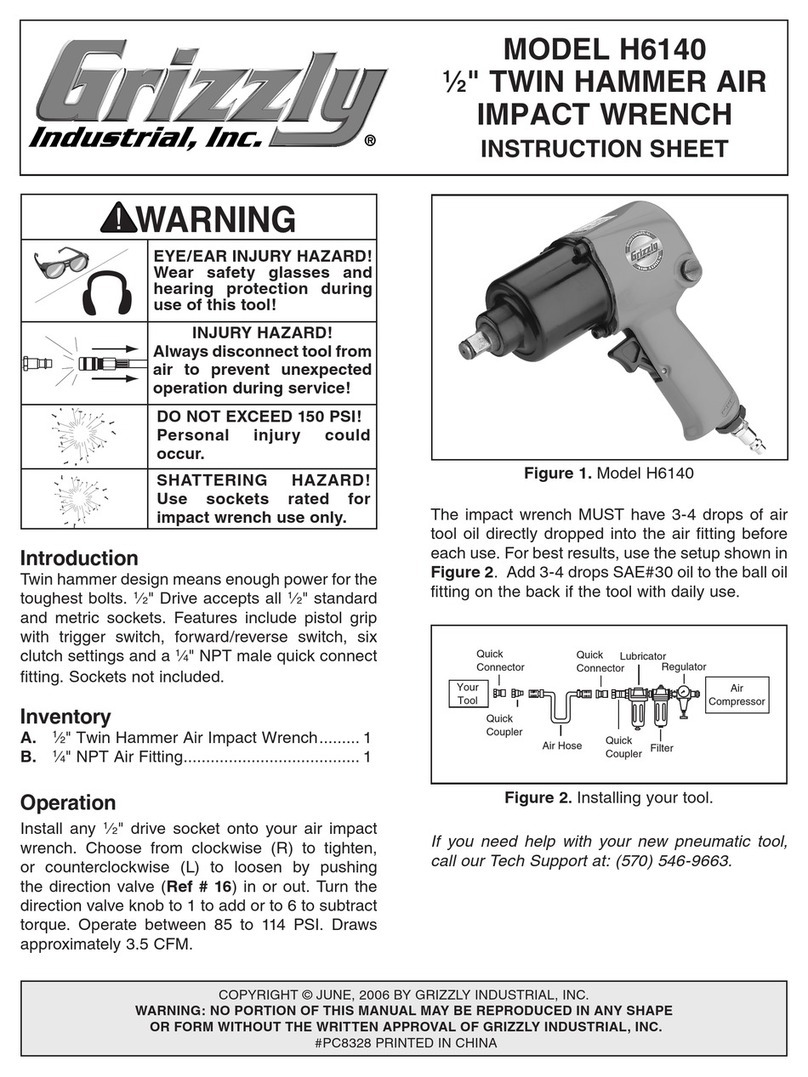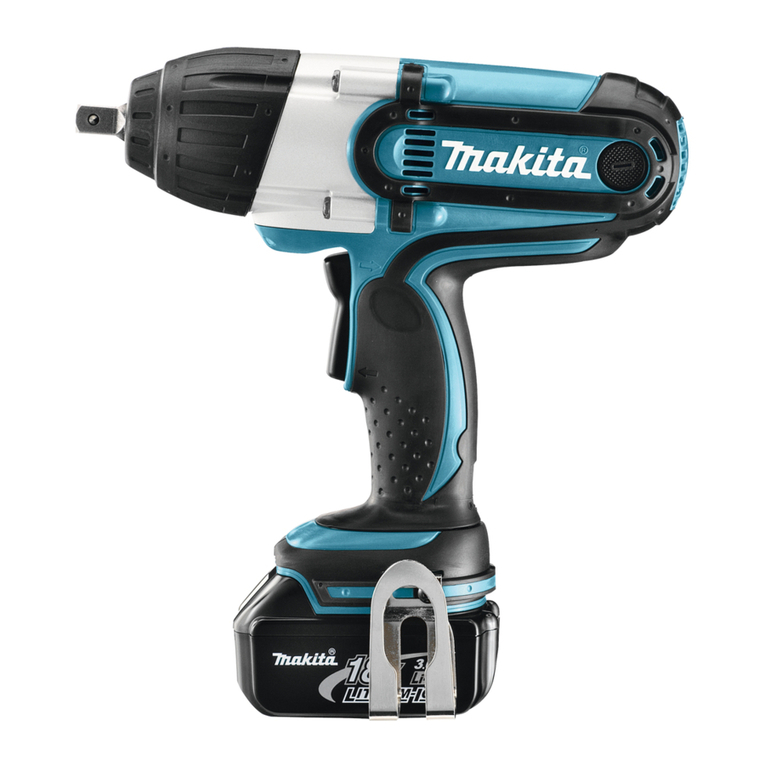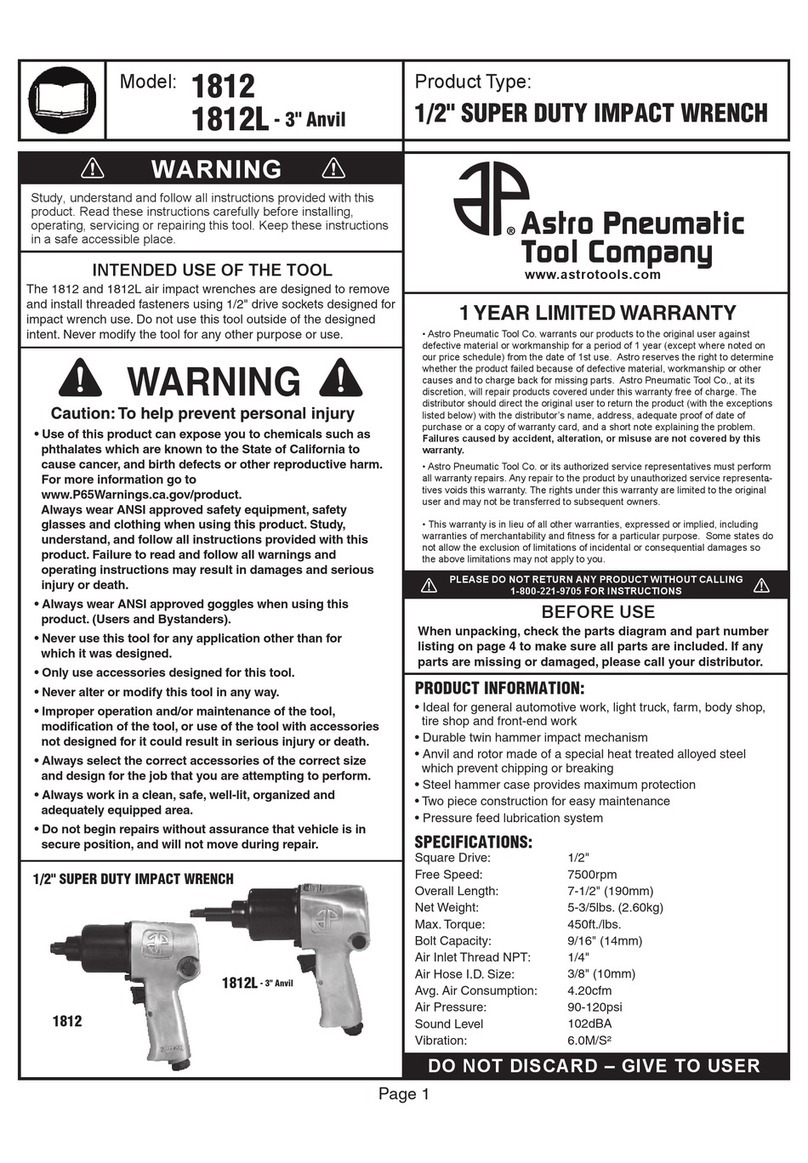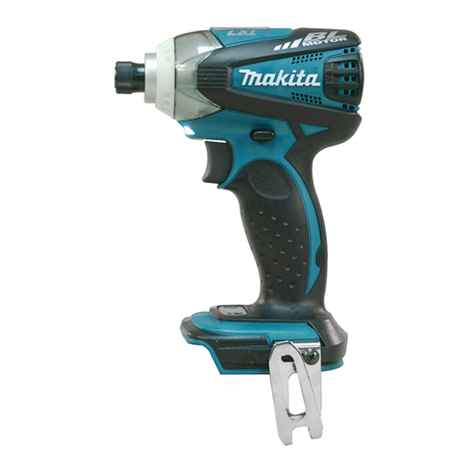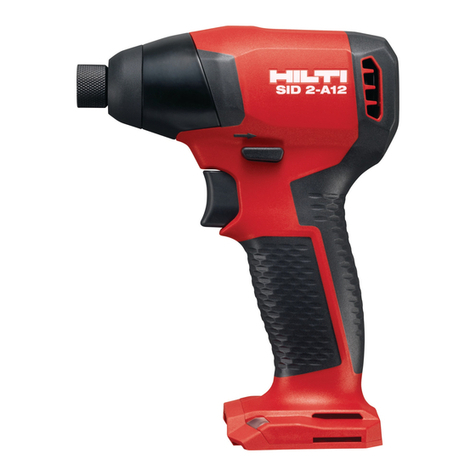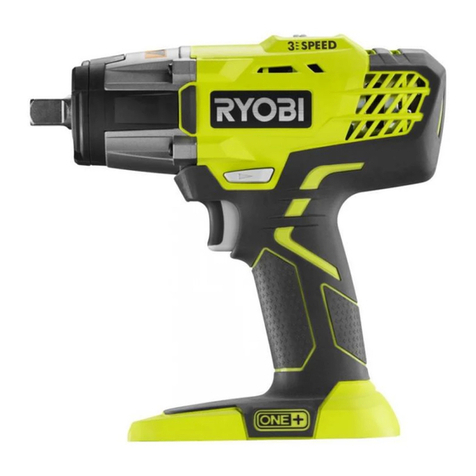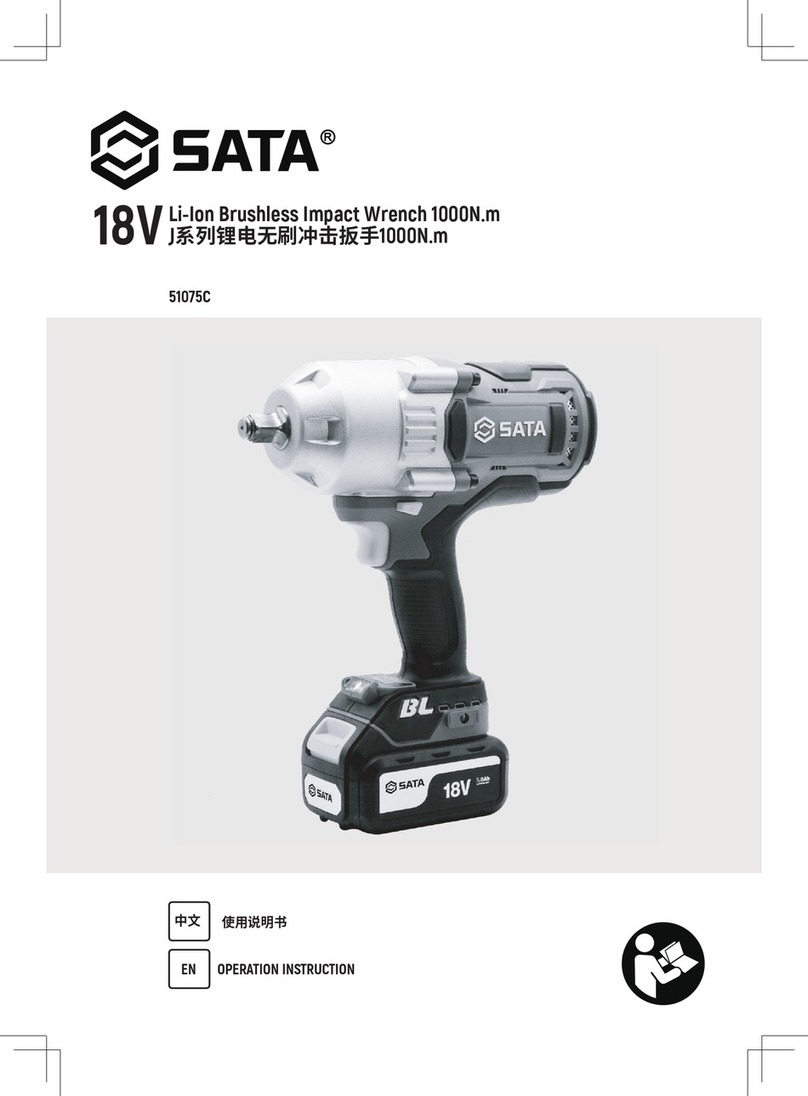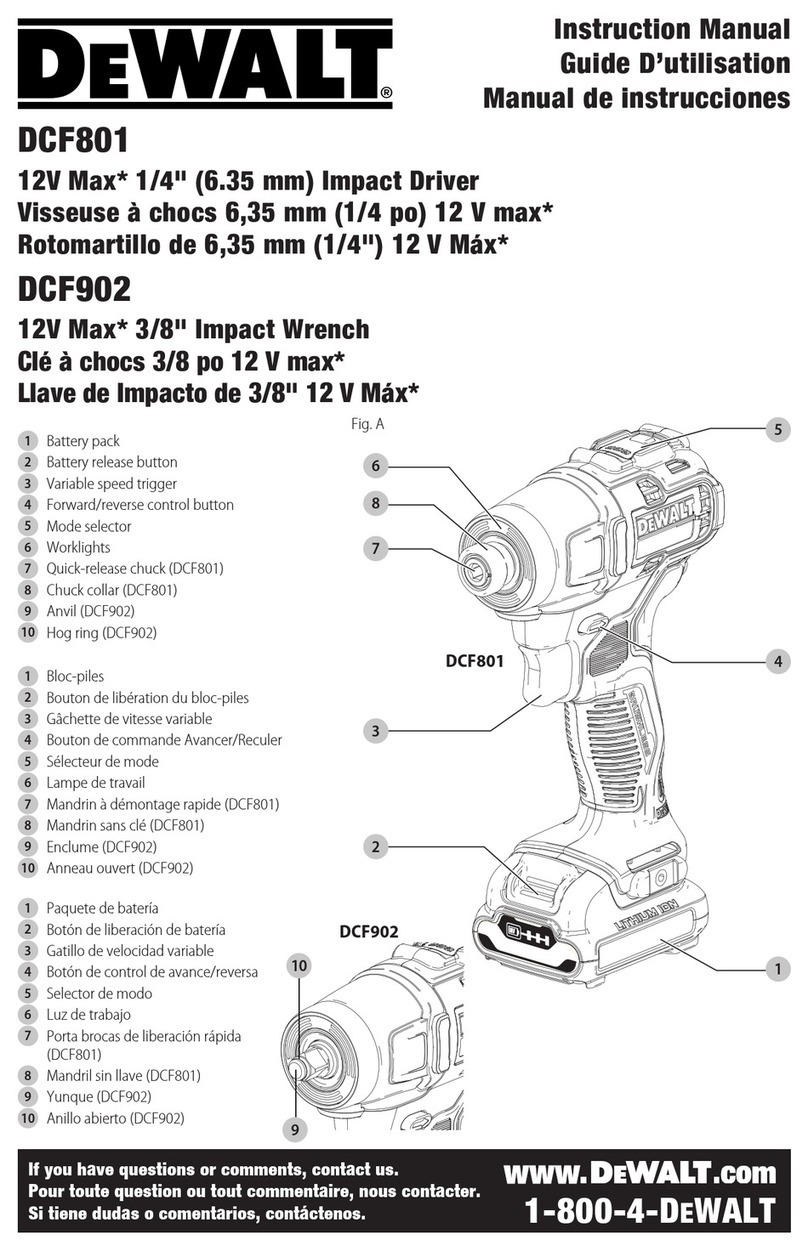
5
Bedienun
Inbetriebnahme
1. Der Druckluft-Schlagschrauber ist mit einem ¼“ Druckluftanschluss (5)
ausgestattet. Zu Ihrer eigenen Sicherheit sollten Sie den Schlagschrauber
nicht fest mit dem Druckluftschlauch verbinden, sondern den beigefügten
Schnellkupplungsadapter (7) benutzen.
2. Dichten Sie das Ende der Schnellkupplung mit Teflonband ab, bevor Sie
diese am Druckluftanschluss des Schlagschraubers aufschrauben.
3. Das Gerät muss während des Betriebes mit Schmieröl versorgt werden.
Geben Sie vor jedem Gebrauch des Gerätes etwas Öl in die Öffnung des
Druckluftanschlusses (5). Alternativ können Sie auch den Mini Nebelöler (8)
benutzen. Beachten Sie auch das Kapitel „Schmierung“.
4. Verbinden Sie die Schnellkupplung des Druckluft Schlagschraubers mit der
Druckluftquelle. Schaltern Sie den Kompressor ein und stellen Sie den
Druckluftminderer Ihrer Druckluftquelle auf 6,3 bar ein.
5. Drücken Sie den Abzugshebel (2). Durch die Betätigung des Abzugshebels
werden die Drehzahl und das Drehmoment geregelt. Je weiter der Hebel
durchgedrückt wird, desto schneller läuft das Gerät. Halten Sie das Gerät
beim Arbeiten fest.
6. Die Maschine ist für den Rechts- wie auch
Linkslauf ausgelegt. Verwenden Sie den
Rechts-/Linkslauf-Schiebeschalter (3) an
der Vorderseite bzw. an der Rückseite der
Maschine, zur Einstellung der Laufrichtung.
7. Drücken Sie den Schiebeschalter nach
vorn heraus. Der Schlagschrauber dreht bei
Betätigung des Abzughebels (2) im
Rechtslauf.
8. Drücken Sie den Schiebeschalter nach
hinten heraus, so dreht der Schlag-
schrauber entsprechend im Linkslauf wenn der Abzugshebel betätigt wird.
9. An der Unterseite des Werkzeuggriffes befindet sich der Luftregler bzw. der
Drehmomentregler (4) zur Voreinstellung einer maximalen Umdrehungs-
geschwindigkeit bzw. eines maximalen Drehmomentes. Drücken Sie diesen
Regler hinein und drehen Sie ihn gleichzeitig auf die gewünschte Stufe. In der
kleinsten Stufe wird ein maximales Drehmoment von 140 Nm erreicht, in der
höchsten Stufe werden die maximal möglichen 312 Nm erreicht.
10. Trennen Sie beim Wechsel des Steckschlüsseleinsatzes, bei Nichtgebrauch
und nach Beendigung der Arbeit sowie bei der Wartung immer zuerst das




